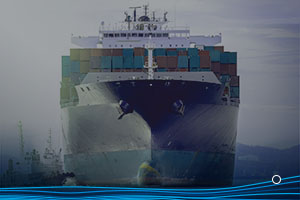
4 Factors to Help Negotiate Better Ocean Shipping Contracts This Year| Transportfolio
The 2017-18 ocean shipping contract season is underway. As you evaluate your budget and ponder the best way to approach negotiations, you will want to keep costs down, consider options, and mitigate risks. But this year, there are four other key points you will want to keep in mind as you talk to ocean service providers.
1. The Hanjin impact
The bankruptcy of the Hanjin shipping line has thrown ports and retailers around the world into confusion. Giant container ships were stranded around the globe, and customers worried about whether the merchandise would reach their shelves. After the South Korean carrier filed for bankruptcy protection and its assets were frozen, ships from China to the U.S. were refused permission to offload or take aboard containers because there were no guarantees that the operators would be paid.
After this experience, some companies feel they need to consider their carriers’ financials and do all they can to avoid putting their cargo on carriers that they perceive to be at risk. While companies are understandably concerned, avoiding one carrier in today’s environment of mega alliances may not be the answer—the fact remains that the cargo will move with the carrier under a different bill of lading.
As I see it, the real lesson of the Hanjin bankruptcy is that companies should look beyond low price as the be-all and end-all of negotiations. Price is just one component of the decision-making process—not the only factor to consider.
2. Alliance reshuffle and independents.
April 2017 marks the formation of new alliances. If you vaguely remember similar changes happening not long ago, you’re right. By now, most shippers know the carriers within these alliances, so I will not go into the details.
What is important to this discussion is that companies should look beyond each alliance to how they can better diversify their options. Within THE Alliance, we know that the Japanese carriers will eventually consolidate next year. How can customers navigate with each carrier, knowing that their alliances will eventually change? There is no easy answer. What you can do is ask whether it makes sense to work across all 3 Japanese carriers today. For instance, Hyundai is not officially in the 2M alliance, and their agreement is only for 3 years. What will happen after that is still a very gray area.
In addition, there are a handful of carriers that are independent, including SM Lines, a “new” Korean liner in the transpacific market. Scale and alliances are critical in this industry, so watching for the long term strategy of these independent carriers is also important.
There is another factor that must also be considered. U.S. legislators are so concerned about the limited antitrust immunity the ocean carriers enjoy today that they recently issued subpoenas to a few ocean carriers. Which begs the question, are the days of the alliances and conferences numbered?
3. Carrier profitability.
Bunker prices—by far, the largest operational parameter for ocean carriers—are slowly creeping back up. As the bunker cost increases, so does the pressure on rates. Overall, price increases compared to May 1 2016; while the amounts vary, the trend upwards is undeniable. While carriers argue these increases aren’t enough to push them into profitability, they argue that some increase is far better than none. Volatility in supply and demand is adding further pressure on rates.
Some have speculated that with the new alliances, carriers will have better deployment strategies. We will have to wait and see. What happens with rates on May 1, 2017, will be an indicator to watch. If rates are too high, history teaches us that the market could crash, causing near-instant chaos. If rates start too low, supply and demand may cause spikes in the industry. A modest increase, such as the one we’re seeing now, might be the silver lining this industry needs.
Many companies wonder if another ocean carrier will go out of business due to their financials. While we do not have a crystal ball, there are good reasons to think that we will not see any of the carriers within the 3 alliances going out of business this year.
4. U.S. infrastructure.
Many shippers focus their negotiation strategies on rates, space, and equipment at origin—all very important factors. But in today’s environment, people should also zero in on what happens after the vessel gets to U.S. ports.
Why is this important? As carrier alliances change, so do their terminal interests and subsequently, the rail interests for inland cargo. Unless both are seamlessly and efficiently managed, there can be monumental delays. Year over year, we have seen increasing issues and inefficiencies at the port with incremental volume increases or small volatility. A select few ocean carriers want to capitalize on market inconsistencies by charging demurrage above and beyond what the rail lines charge across the U.S. interior.
Practices like these are (thankfully) not widespread, but the behavior is troubling. As you negotiate with carriers, be prepared to ask what they are doing to work toward a collective solution and improve efficiency.
Keep these 4 factors top of mind as you develop an overall strategy for negotiating with ocean shipping providers this year. Your budget will thank you for it. And as you navigate this process, our global supply chain experts are ready to help.



